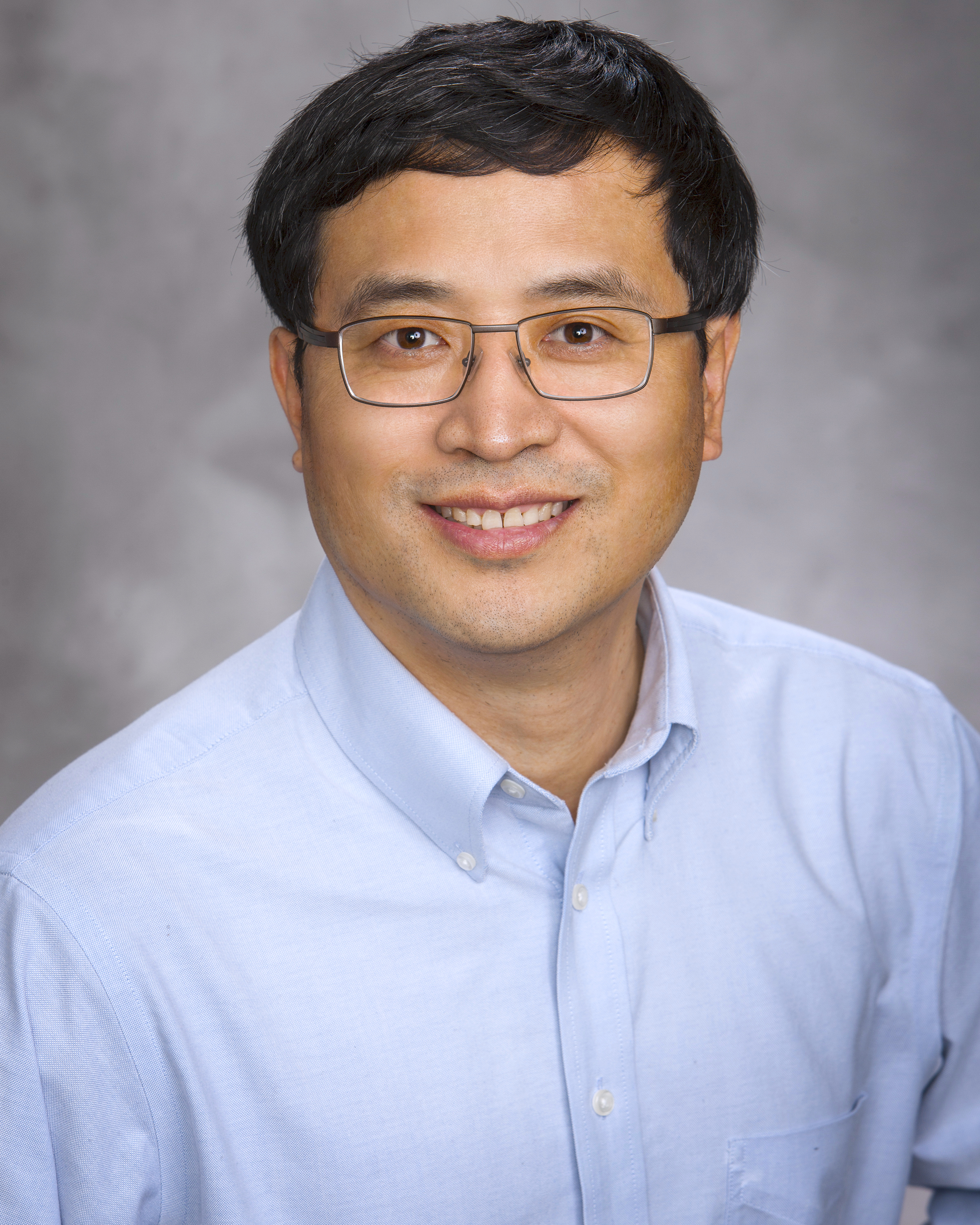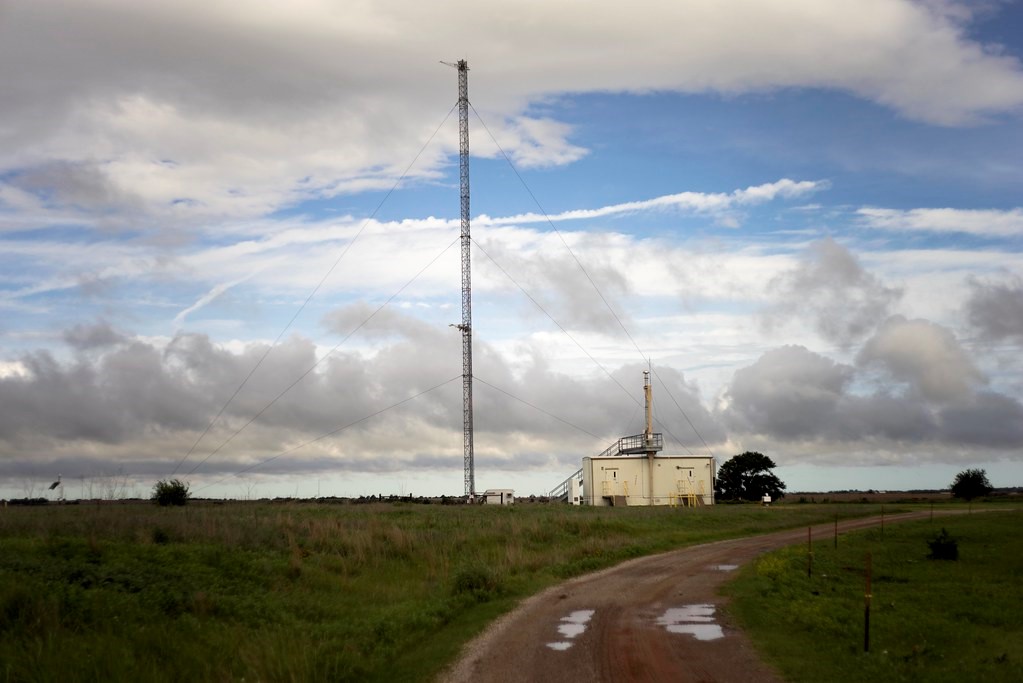Shaocheng Xie: Translating ARM Data for Science
Published: 16 February 2021
A cloud and earth system modeler coordinates the science translators who help make ARM measurements more accessible

In the summer of 1992, the Atmospheric Radiation Measurement (ARM) user facility collected its first data from a battery-powered device in an Oklahoma cow pasture. Almost three decades later, ARM operates atmospheric observatories in climate-critical regions across the world and has archived petabytes of data.
Shaocheng Xie, a research scientist at Lawrence Livermore National Laboratory in California, first drew on ARM measurements in 1996 as a graduate student at Stony Brook University in New York (PhD, 1998).
To this day, for his career-long work in cloud and earth system modeling, Xie uses data from ARM, a U.S. Department of Energy (DOE) scientific user facility, though mostly in the form of value-added products (VAPs).
Among his many roles, Xie is the ARM VAPs and translators lead, a role he took on in 2019. It requires coordinating five geographically scattered experts responsible for developing data products. These five science translators―Xie, Scott Collis, Scott Giangrande, John Shilling, and Damao Zhang―lead the data development efforts and are liaisons between ARM infrastructure staff and ARM users.
ARM data users include university professors and students, scientists at national laboratories, and researchers with projects funded by DOE’s Atmospheric System Research (ASR) and other programs.
The Big Picture
“Raw ARM data may not meet all users’ scientific needs, so we serve as a bridge between ARM data and its users.”
Shaocheng Xie, ARM’s value-added products and translators lead
Xie manages the big picture for translator projects through weekly meetings to coordinate VAP developments and discuss user feedback and program needs.
Researchers looking into ARM data often need help getting efficient access to the decades of continuous observations, understanding how the data are measured, and what the quality of the data is.
“Raw ARM data may not meet all users’ scientific needs,” says Xie, “so we serve as a bridge between ARM data and its users.”
The bridge is made of the ARM VAPs, which include desirable geophysical quantities derived from ARM measurements.
“These quantities cannot be directly measured by ARM,” says Xie. “We transform data into forms that can be easily understood by the user community and the modeling community.”
Developing Earth System Models

Scientists who study how clouds are represented in earth system models often use ARM data to develop ideas and validate those models.
That puts Xie in good company, as one major thread in his research career is earth system model development.
Xie was co-chair of the atmospheric group working on DOE’s Energy Exascale Earth System Model (E3SM), and he co-led the development of the first-generation atmospheric model for E3SM. He now leads the effort to develop its next generation of atmospheric physics for E3SM version 3.
Xie and others also continue work on the single-column model, which was once ARM’s signature modeling approach. This type of model encompasses a vertical column over one grid cell in a model from the surface to the top of the atmosphere.
He also works with a platform called the Cloud-Associated Parameterizations Testbed to develop and evaluate existing and new physical representations for earth system models. The platform helps diagnose model errors over short-term timescales by using a weather forecasting technique that links field observations from ARM and elsewhere to model diagnosis and development.
Lately, Xie is studying how to improve the way models represent daily cycles of precipitation, especially elevated levels of convection over land surfaces at night.
He leads an international project on modeling cycles of precipitation in a variety of climate regimes. The effort uses ARM data under the World Climate Research Programme-Global Energy and Water Exchanges project’s Global Atmospheric System Studies panel.
Exploration of Clouds and Machine Learning

Xie’s focus on clouds and convection goes back to his PhD dissertation by way of convective triggers for deep convection. He asks: What physical processes and thermodynamic conditions control convection? And how can they be represented in models?
Such triggering mechanisms determine when and where modeled convection occurs, says Xie, making them “very critical for representing convection in climate models.”
He led a 2019 paper that developed a new convective trigger to dramatically improve the diurnal representation of precipitation in E3SM.
Meanwhile, Xie says, machine learning can help. This algorithm-driven application of artificial intelligence teaches computers to learn by automating some of the most complex parts of analysis.
In a recent paper, still in review, he and others demonstrate how machine learning can help identify what kinds of large-scale conditions trigger convection. The study is based on 11 years of observations from ARM’s Southern Great Plains atmospheric observatory and nearly two years of ARM Mobile Facility data during the Green Ocean Amazon (GoAmazon2014/15) field campaign in Brazil.
Of all the metrics the authors employed, “a machine learning-based trigger performed the best,” says Xie.
ARM translators, he adds, are also exploring machine learning to help pinpoint data-quality issues.
Overcoming Upheaval

If convection is a thread that runs through Xie’s career, the earliest point in that thread goes back to his native Beijing, China.
As a recent graduate of the Chinese Academy of Meteorological Sciences (M.S., 1988), Xie was hired at the National Meteorological Center of China. Because his master’s degree focused on numerical weather prediction, he was tasked to join (and went on to lead) the development of the second generation of China’s medium-range numerical weather prediction model. At the same time, Xie was asked to improve the center’s representation of convection.
This first job set the compass for a career path through storms, clouds, and the models that predict them.
The most surprising fact from those days, says Xie, is that his master’s degree put him in the highest academic rank at the center. There were no PhDs.
“I was one of the first new generation to resume higher education after the 10-year Cultural Revolution happened in China,” he says.
In 1966, when the upheaval began, authorities closed all centers of higher education.
A little more than a decade later, however, China reintroduced a merit-based entrance examination for higher education. Doing so well in the exam put Xie in the first wave of young Chinese to resume their nation’s academic momentum. In 1981, he began studies at Nanjing Institute of Meteorology (B.S., 1985).
At first, Xie was attracted to astronomy, which he assumed was the university’s specialty. But once classes started, he realized his studies would be in meteorology, “not about Earth or space,” he says, “but something in the middle―the atmosphere.”
‘Lucky Again’
“I like to predict the future based on physical rules.”
Xie
Xie’s interest in atmospheric science quickly grew in his third year when he put aside intensive physics and mathematics to start taking courses in his major.
“Meteorology and atmospheric dynamics fit my personality very well and also my capabilities very well,” he says.
So did the challenge of modeling. “I like to predict the future based on physical rules.”
Later, his post-master’s work at the meteorological center showed Xie that atmospheric science “can have immediate impact,” he says, and that was an attractive idea.
A PhD program was a natural next step.
“I was lucky again,” says Xie, who was in the first generation of students to study in the United States after China opened its doors to the world in 1977.
At Stony Brook, Minghua Zhang, a longtime ARM principal investigator and an early user of ARM data, became Xie’s mentor and dissertation advisor.
Under Zhang’s guidance, he encountered ARM data and used them to develop a new convective trigger for a deep convection scheme in the single-column model.
Onward, With Hiking

Xie sees a storm or two, not as a modeler but as an outdoors enthusiast. An avid climber and hiker, he has taken on all the major peaks in China that do not require rope, crampons, harnesses, and other technical gear. He has also climbed and hiked elsewhere in Asia and in Europe.
“Travel is one of the reasons I came to the United States,” says Xie. “You can travel to any other part of the Earth.”
At home in California, Xie enjoys trekking up the nearly 4,000 feet of Mount Diablo, east of San Francisco Bay. He and his family also speed down the ski slopes when they can.
His daughter is a third-year law student at Columbia University. His son is an undergraduate at the University of California, Berkeley. And his wife is an award-winning hairstylist.
“I’ve worked (with) ARM my entire career in the United States. I enjoy working with ARM and on such big projects, which need teamwork and have immediate, big impacts on society.”
Xie
California came into the picture in January 1998, when Xie attended the first ARM single-column model workshop hosted at Livermore. He met Richard Cederwall, another early ARM pioneer and a former ARM lead translator.
Cederwall hired Xie as a postdoc, starting in October 1998, which he says allowed him to maintain his key interests, “from ARM data to global climate modeling.”
ARM, ARM, ARM. It has marked Xie’s career from his dissertation to the present day.
“I’ve worked (with) ARM my entire career in the United States,” he says. “I enjoy working with ARM and on such big projects, which need teamwork and have immediate, big impacts on society.”
Xie adds, with a laugh, “I will retire from ARM―but not for a while.”
Keep up with the Atmospheric Observer
Updates on ARM news, events, and opportunities delivered to your inbox
ARM User Profile
ARM welcomes users from all institutions and nations. A free ARM user account is needed to access ARM data.


















